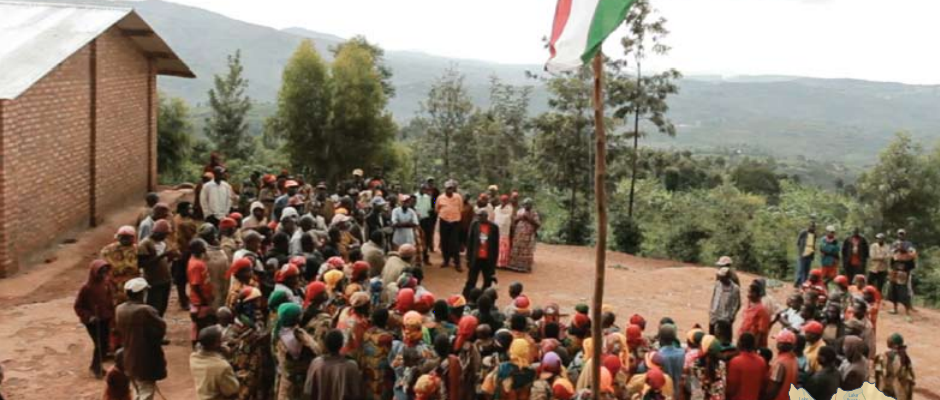
The Royal Government of Cambodia (RGC) has made a strong commitment to strengthening public service delivery through three interrelated public sector reform initiatives: Public Financial Management Reform Program (PFMRP), National Program for Public Administration Reform (NPAR), and Decentralization and Deconcentration (D&D) reforms. Each of these reform programs carries specific initiatives to improve sub-national governance. Complementing these initiatives, the RGC has progressively increased the allocation of budgetary resources to sub-national administrations (SNAs). Between 2013 and 2020, SNA budgets increased from about US$190 million to US$821 million. Within the same period, the budget share of SNAs has increased from 6.1 to 8.1 percent of the total state budget.
D&D reforms began at the commune/sangkat (CS) level, the lowest tier of SNAs, with the direct election of CS councils in 2002. This was followed by indirect elections for district, municipal and khan (DMK), and capital and provincial (CP) level councils. Central to the reform effort is the transfer of more functions and resources to sub-national levels, especially to the district and municipal (DM) level, the main tier for service delivery. In late 2019, a substantial number of functions were transferred to the DM level.
This study reviews the recent changes in Cambodia’s intergovernmental fiscal architecture. It starts with the description of the overall sub-national system, then delves into the challenges of managing different aspects of the reform, such as assigning expenditure responsibilities and financing sources. It also assesses the strengths and weaknesses of the public financial management systems at the sub-national levels. The emphasis is at the DM level, where more service delivery functions and resources are expected to be transferred. The research is based on an extensive review of government documents and regulatory framework, quantitative data analysis, and fieldwork conducted in March 2020. Drawing on its findings, the study offers policy recommendations on how the country’s inter-governmental fiscal architecture can be improved over the short and long-term horizons.
Key Messages
- Advancement in D&D requires strengthened coordination with other governance reforms, namely, the PFMRP and NPAR. It is particularly important to have close coordination between the D&D reform program and the PFMRP, with the latter also targeting reforms for SNAs, namely, the Subnational Administration Budget System Reform Strategy (SNA-BSRS).
- The reorientation of reform efforts toward horizontal or territorial deconcentration through transferring functions to DM administrations would require providing clarity to the concept of “unified administration.” The 2008 Law on the Management of CP and DM administrations (commonly referred to as the Organic Law) established the legal framework for indirectly elected councils at the DM and CP levels and mandated to have “unified administrations.” However, the concept of unified administration is not clearly defined in the legislation nor in policy documents.
- The current legal framework for the assignment of service delivery responsibilities needs further clarification. All three tiers of SNAs are assigned both obligatory and permissive functions without explaining the difference between them. A more explicit articulation of obligatory and permissive functions would support implementation of reforms. In the absence of a clear definition, these concepts are not interpreted uniformly by officials, thus affecting the quality of implementation.
- The sub-national share of public expenditures in Cambodia remains among the lowest in the world. In 2019, around 8.1 percent of total general government expenditures were under the control of the entities at the sub-national levels. Among the spending categories, SNAs account for 5.7 percent of wage and salary spending, 14.7 percent of non-wage expenditures, and 10.6 percent of capital expenditures (for domestic funding only). Of the decentralized spending (i.e., budgets of the three sub-national levels), the CP level accounts for the largest share while the DM level accounts for the smallest share.
- Intergovernmental financing arrangements, which include the transfer system and own-source revenue assignment, need to adjust as more functions are assigned to SNAs. At least four central government fiscal transfers are currently available to SNAs. Total transfers are by far the largest for the CS and DM levels. Conditional transfers presently play a small role in intergovernmental fiscal relations, though they are expected to grow in importance to support the transfer of more functions. The size and distribution of the District Municipal Fund (DMF), and Commune/Sangkat Fund (CSF) are rule-based and underpinned by several legal instruments. In contrast, there is no similar fund created for the CP level. Progress in own-source revenue generation has been very limited. Currently, only the CP level has been assigned tax revenue through revenue sharing. At the CP level, tax collection is concentrated in Phnom Penh, the administrative and economic capital of the country.
- The RGC could look to improving sub-national PFM systems and practices to strengthen D&D implementation. Sub-national PFM systems were designed when SNAs did not play an important role in budget execution and are no longer fit for purpose. With the advancement in the implementation of D&D reforms, there is an urgent need to improve the PFM systems and practices to fit the direction and pace of reforms.
To read more about the policy options and recommendations outlined by the authors, access the full World Bank document: Yilmaz,Serdar; So,Sok Bunthoeun; Ly,Sodeth; Valley,Ildrim; Pak,Kimchoeun; Chea,Marong; Mcdonald,Paul Lachlan. Cambodia – Intergovernmental Fiscal Architecture Study (English). Washington, D.C. : World Bank Group.
Photo credit: Moonlight Pavilion. Used under Creative Commons license (CC BY 2.0).



